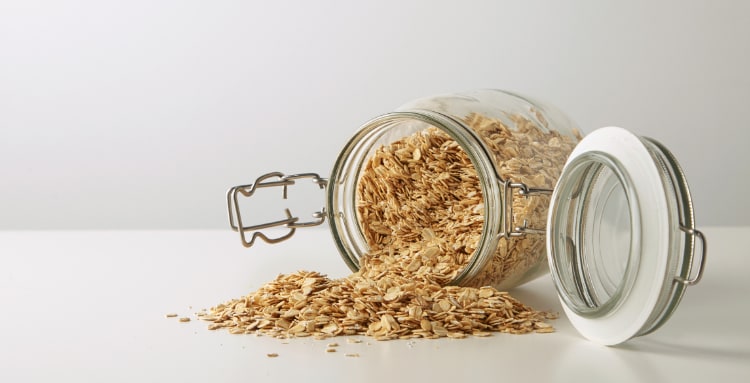
(V wrote this article before she gave birth.)
Whew! What an amazing 8-month-long journey this has been. I can hardly believe that my due date is just around the corner! In just a few short weeks, my little bundle of joy will make his grand entrance into the world.
Make that a huge bundle of joy because right now—I’m 34 weeks as I’m writing this—HE is already huge: over 7 pounds! (Sorry to spoil the gender reveal.)
And he’s only going to get bigger. Starting in week 36, babies gain about half a pound and grow half an inch a week. That means he (naming reveal to be announced later) is on track to be 10 pounds by week 38. I wasn’t all that surprised, considering that on both sides of the family, we’ve got some long, tall genes.
Despite lugging a bowling bowl around with me everywhere I go, I’m not one of those pregnant moms with swollen feet propped up on pillows. That’s because I’m been staying super active and eating healthy.
Look, I know how tempting it is when you’re pregnant to give in to cravings. “I’m carrying around this 10-pound baby and deserve a pint of ice cream!”
But when you give into temptation during the later part of your pregnancy, you run the risk of…

Gestational Diabetes
You can have perfectly normal blood sugar levels but if you get your Ben & Jerry’s on every night, you can develop a type of diabetes that occurs during pregnancy: Gestational diabetes.
As if our hormones weren’t challenged enough being ladies without gestating babies. But during pregnancy, shifts in hormone levels can change how our body processes glucose (sugar). With pregnancy, hormones focus on the task at hand, keeping baby healthy—at the expense, however, of making it more difficult for the hormone, insulin, to escort sugar out of the bloodstream and into the cells.
With all the built-up sugar in the blood, gestational diabetes can occur. And it usually happens around the 24th to 28th week of pregnancy.
Only someone who has given birth, or is about to, can understand the intense desire to eat whatever you want. But the problem with giving in to temptation is that gestational diabetes doesn’t just affect the mama, but also the baby.
Preeclampsia (high blood pressure), premature birth, macrosomia (a condition in which the baby grows larger than normal), and neonatal hypoglycemia (low blood sugar in the baby after birth) are just a few conditions that are tied to gestational diabetes.
So even though pre-natal babies and bon bons go hand in hand, I’m not willing to jeopardize my health or that of my baby for a quick sugar fix. If I need something sweet, I’ll go for some fresh organic fruit or make one of my popular smoothies or low-sugar desserts.
Read Real Food For Pregnancy
I’ve been studying nutrition pretty much my adult life. But when it comes to eating healthy during pregnancy, I wanted to turn to the experts. And one of the best resources I came across was a book called, “Real Food For Pregnancy,” written by the author of Real Food For Diabetes, Lily Nichols, a registered dietitian, and certified diabetes educator.
On one hand, the importance of consuming nutrient-dense, real foods should apply to everybody, no matter which stage of life you’re in, baby bump or none. But what I found the most valuable from the book is the common misconceptions about prenatal nutrition. For instance, many pregnant women are told to avoid eggs or seafood, due to their cholesterol or mercury content.
Would you call child protective services on me if I told you I’ve been eating sushi while pregnant? It’s true! As Nichols implies, there’s no reason to be hysterical about eating sushi occasionally. Would I get to-go sushi from a gas station? No. But I’ll go to a high-end sushi joint I’ve been going to for years, and has never made me sick. Why risk it, you might ask? It’s because the cold-water fish used in sushi rolls are one of the best sources of Docosahexaenoic acid (DHA).
DHA is an omega-3 fatty acid and one of the best nutrients for your heart and brain. And for a growing baby, too!
However, you definitely want to keep your intake of high-mercury fish like swordfish and canned tuna to a minimum. High-mercury fish tend to be lower in DHA anyway. Try to limit your intake of canned tuna and mahi to 6 oz once a week.
below, my recipe for Pistachio Coated Salmon.
Is Red Meat Safe For Pregnancy?
I’ve never been a huge meat eater. But I have gotten in touch with my inner caveman because in reading Real Food For Pregnancy, I learned that eating a little meat-on-bone provides essential nutrients such as collagen that you can’t get from a typical burger patty. Still, it’s weird gnawing on chicken bones like I’m a frat boy putting down 20 pieces on wing night at the bar.
Of course, the quality of meat is super important. I know how insane food prices have shot up. But I’m willing to spend the extra money to support my developing baby.
below, Chef V's baby shower

Prenatal Vitamins: Are They Worth It?
Of course, certain nutrients are vital for a growing baby such as folic acid. Personally, I think prenatal vitamins are just fine, but the one mistake some expecting mothers make is that they take the vitamins in lieu of getting the nutrients from real food.
That’s why I’ve been eating more eggs during pregnancy than combined over my whole life. Remember DHA I was just talking about? I eat 3 eggs a day sometimes to make sure I’m getting it straight from the source. But I admit, I’m gonna be so sick of eggs by the time this is over.
Avoid Green Leafy Veggies Because of Bacteria?
Some expecting mothers are told to avoid green leafy veggies because they may be more susceptible to bacterial contamination.
But if you’re avoiding dark green leafy veggies because you’re scared of bacteria, well, that’s just crazy. No offense.
Green leafy veggies are some of the most nutrient-dense foods on the planet. Why deprive yourself and your growing baby of the vitamins and minerals on the rare chance you’ll become sickened by tainted produce?
In my opinion, the reward of eating plenty of dark, leafy greens is much greater than the risk.
I’m also not giving into the warning not to drink unpasteurized juices. At least not when it comes to having Organic Green Drink, which my body is so used to after drinking it for over 10 years.
Again, the health benefits of raw Green Drink outweigh the risks. The living microorganisms from the 7-certified organic leafy greens in Green Drink nourish my gut microbiome. And, in turn, it will help colonize my baby’s beneficial gut bacteria.
Now, I don’t want you to think that even while pregnant I don’t eat any junk. But pretty much, my biggest indulgences have been pancakes or waffles. Obviously, with almond flour, not regular white flour, haha.

Staying Active Well Into 3rd Trimester
The impulse to sit on the couch when you’re sweating with a watermelon-sized belly is strong. But not only do you have to get a little movement, the more movement you get, the easier your pregnancy may be.
That’s why I’m still doing yoga almost every day, going to the gym, playing pickleball 5-6 days a week—yup, even at 34 weeks!—and last, but not least, I’m playing golf 2-3 times a week. All the while still working full-time! I work every day but I also make sure to squeeze in time for fun every day.
And here’s the crazy thing. Now that I’m just about 6 weeks shy of the due date, my golf game is better than ever. I’m crushing the ball. My drives are 240 yards. That’s 40 yards longer than before I became pregnant! I’m catching up with Brandon’s long game. Still, I have to admit some defeat. I can’t do a whole 18 holes. I’m cutting down to 9.
You know how in traditional cultures, the moms carry their babies on their backs? Well, I’ll probably be on the links and pickleball court with one of those back slings, haha!
Stay tuned. I can’t wait to introduce you to…him.



























